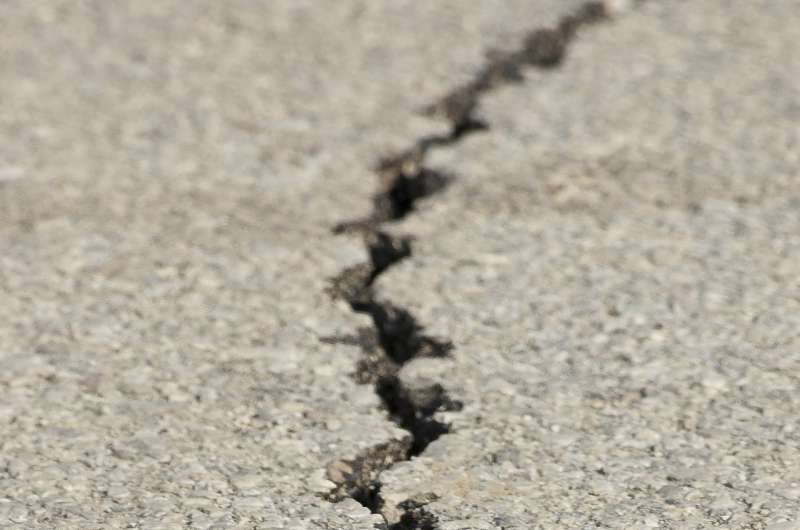Slow-motion interplate slip detected in the Nankai Trough near Japan

Earthquakes are generally thought of as abrupt, violent events that last for only moments. However, movement of the Earth's tectonic plates is often less sudden and more sustained—slow earthquakes can last for hours, months, or even longer.
Researchers led by The University of Tokyo have discovered signals due to slow slip events with large amounts of slip along the Nankai Trough subduction zone just southeast of Japan, reported in a new study published in Science Advances.
Slow earthquakes such as these slow slip events are exceedingly difficult to detect using conventional seismological techniques, especially in offshore areas. However, because understanding slow earthquake events is essential for evaluating the risks posed by more violent seismic events like megathrust earthquakes, new methods have been developed to address this problem.
For this research, a Global Navigation Satellite System-Acoustic ranging (GNSS-A) combination technique was used to monitor changes in the absolute position of the seafloor. According to study first author Yusuke Yokota, "GNSS-A was first proposed in the 1980s, but has really been developed and applied over the last two decades for detection of slow earthquakes. This method combines satellite detection of movements at the sea surface with undersea data from an acoustic ranging system, and can reliably detect deformation of 5 cm or more in offshore areas."
Slip sites generally were detected below the shallow undersea interplate boundary of the trough, adjacent to regions with strong interplate coupling. Recurrent offshore slow slip event signals were detected in the Kii and Bungo Channel areas, and were correlated with strong activity of very low frequency seismic events.
Slow slip event signals were not clearly identified in the Tosa Bay or Enshu-nada regions, although this may have been a matter of insufficient resolution. However, their absence may also support the possibility that these are the main slip regions of the megathrust zone of the Nankai Trough.
"Differences in the features between these regions may be related to earthquake history and reflect different friction conditions," explains Dr. Yokota. "Detailed understanding of these friction conditions and how they relate spatiotemporally to megathrust earthquake events is essential for accurate earthquake simulation. Therefore, studying these newly discovered slow slip events in the Nankai Trough will contribute to earthquake disaster prevention and preparedness."
In addition to informing earthquake disaster research, these findings also shed light on the marine sedimentary environment and plate tectonics of the Nankai Trough.
The article, "Shallow slow slip events along the Nankai Trough detected by GNSS-A," was published in Science Advances.
More information: "Shallow slow slip events along the Nankai Trough detected by GNSS-A" Science Advances (2020). DOI: 10.1126/sciadv.aay5786 , advances.sciencemag.org/content/6/3/eaay5786
Journal information: Science Advances
Provided by University of Tokyo




















